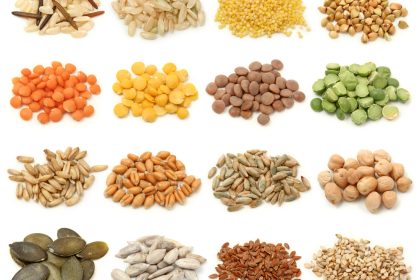Receiving a prediabetes diagnosis can feel overwhelming at first, but this condition actually represents an important opportunity to make meaningful changes before developing type 2 diabetes. With blood sugar levels higher than normal but not yet in the diabetic range, prediabetes serves as your body’s early warning system—and the good news is that timely dietary interventions can often reverse this condition completely.
The critical window of opportunity prediabetes offers
Prediabetes functions as more than just a clinical diagnosis—it’s essentially your body sending an urgent message that your current path leads toward diabetes without intervention. This metabolic state occurs when cells begin developing resistance to insulin, the hormone responsible for regulating blood sugar levels.
The condition affects millions of people, with many unaware they have it until routine bloodwork reveals elevated glucose levels. What makes prediabetes particularly significant is that it represents a reversible state—a critical window where relatively modest lifestyle changes can prevent progression to full diabetes and its numerous complications.
Research consistently demonstrates that dietary modifications stand among the most effective interventions for managing prediabetes. The foods you choose directly impact how your body processes glucose, making your daily eating decisions powerful medicine for bringing blood sugar back into healthy ranges.
Understanding this connection between diet and blood sugar management empowers you to take control of your health trajectory. Rather than viewing prediabetes as a sentence, consider it a valuable alert system giving you the chance to make corrections before more serious health consequences develop.
Fiber-rich foods that stabilize your blood sugar
Perhaps the most powerful dietary change for managing prediabetes involves increasing your fiber intake. Fiber plays a crucial role in regulating blood glucose by slowing sugar absorption into the bloodstream, preventing the rapid spikes and crashes that strain your insulin response.
Plant foods naturally contain two types of fiber—soluble and insoluble—both beneficial for blood sugar management. Soluble fiber forms a gel-like substance during digestion that particularly helps moderate glucose absorption. Insoluble fiber adds bulk to stool and supports digestive health while also contributing to better glycemic control.
Practical ways to increase fiber include starting your day with steel-cut oatmeal topped with berries instead of processed breakfast cereals. Replace white rice with fiber-rich alternatives like quinoa, brown rice, or barley. Add legumes such as lentils, chickpeas, and black beans to soups, salads, and main dishes for substantial fiber boosts.
Vegetables provide excellent fiber sources while adding minimal impact on blood sugar. Dark leafy greens, broccoli, Brussels sprouts, and artichokes offer particularly high fiber content. Aim to fill half your plate with non-starchy vegetables at lunch and dinner for blood sugar benefits beyond just the fiber content.
Whole fruits provide fiber along with natural sweetness, making them ideal replacements for processed sweets. Berries, apples, and pears rank among the best choices for people with prediabetes due to their higher fiber and lower sugar content compared to tropical fruits.
Reducing processed carbohydrates that spike blood sugar
While increasing fiber represents a positive addition to your diet, equally important is reducing processed carbohydrates that rapidly convert to blood sugar. These refined foods strip away the fiber and nutrients that would naturally slow digestion, leaving primarily starch that quickly breaks down into glucose.
White bread, pastries, white pasta, and many breakfast cereals fall into this category of fast-digesting carbohydrates. When consumed, these foods can cause dramatic blood sugar spikes followed by crashes that trigger hunger and cravings—creating a difficult cycle for someone managing prediabetes.
The science behind this effect relates to the glycemic index (GI) and glycemic load (GL) of foods. High-GI foods raise blood sugar more rapidly and significantly than low-GI alternatives. For prediabetes management, choosing lower-GI options helps maintain steadier glucose levels throughout the day.
Practical swaps include replacing white bread with 100% whole grain varieties, white rice with brown rice or cauliflower rice, and regular pasta with whole wheat or legume-based alternatives. Even these simple substitutions can significantly impact daily blood glucose patterns.
Sugary beverages deserve special attention as particularly problematic for blood sugar control. A single 12-ounce can of soda contains roughly 39 grams of sugar with zero fiber to moderate absorption. Replacing these drinks with water, unsweetened tea, or occasionally sparkling water with a splash of juice can dramatically improve blood glucose stability.
Healthy fats that improve insulin sensitivity
Contrary to outdated nutritional advice that vilified all dietary fat, research now shows that certain fats play beneficial roles in blood sugar management. Healthy unsaturated fats can actually improve insulin sensitivity—the very mechanism that becomes impaired in prediabetes and diabetes.
Monounsaturated fats found in foods like avocados, olive oil, and most nuts help reduce inflammation while supporting healthy cell membrane function. These improvements at the cellular level can enhance insulin reception and glucose uptake, directly counteracting the insulin resistance characteristic of prediabetes.
Omega-3 fatty acids, particularly abundant in fatty fish like salmon, mackerel, and sardines, demonstrate similar benefits for metabolic health. These essential fats help reduce inflammation throughout the body while improving cell membrane fluidity and insulin signaling pathways.
Incorporating these healthy fats proves relatively simple with strategic food choices. Using olive oil instead of butter for cooking, adding avocado to salads and sandwiches, including a small handful of nuts as a snack, and aiming for fatty fish twice weekly provides excellent sources of beneficial fats.
Importantly, these healthy fats should replace—not supplement—less healthy saturated and trans fats in your diet. Foods high in saturated fat, including fried foods, fatty meats, and full-fat dairy, can worsen insulin resistance and inflammation when consumed regularly. Making thoughtful swaps rather than simply adding healthy fats ensures better overall metabolic outcomes.
Lean protein choices that prevent blood sugar crashes
Protein plays a crucial role in blood sugar regulation by slowing digestion and providing satiety without significantly raising glucose levels. Including adequate protein at meals helps prevent the blood sugar peaks and valleys that can occur when eating carbohydrates alone.
Animal-based proteins like chicken breast, turkey, fish, and egg whites provide complete amino acid profiles with minimal impact on blood sugar. Plant-based options including tofu, tempeh, legumes, and certain meat alternatives offer protein with the added benefit of fiber, creating an even more stabilizing effect on glucose levels.
The timing of protein consumption matters particularly for prediabetes management. Including protein with breakfast sets up more stable blood sugar throughout the entire day. A morning meal containing eggs, Greek yogurt, or plant-based protein powder in a smoothie can prevent mid-morning energy crashes and subsequent cravings.
Protein distribution throughout the day, rather than concentration at dinner, provides better overall glycemic control. Aim for roughly equal protein portions across all meals to maintain steady energy and blood sugar levels from morning until evening.
Quality matters when selecting protein sources. Highly processed meats like sausages, hot dogs, and deli meats often contain additives, preservatives, and sodium that can negatively impact overall health. Focusing on minimally processed options provides better nutritional value while supporting prediabetes management.
Mindful eating practices that prevent overeating
Beyond specific food choices, how you eat significantly impacts blood sugar management. Mindful eating practices help prevent the overeating that can strain metabolic systems and spike glucose levels regardless of food quality.
Portion awareness represents the foundation of this approach. Even healthy foods consumed in excessive quantities can challenge blood sugar regulation. Practical strategies include using smaller plates, measuring portions initially to calibrate visual estimates, and understanding appropriate serving sizes for different food categories.
Meal timing and frequency also influence glycemic control. Consistent meal timing helps regulate hunger hormones and prevents the extreme hunger that often leads to poor food choices. Whether you prefer three substantial meals or smaller, more frequent eating occasions, consistency helps maintain stable blood sugar.
Eating without distractions allows better recognition of fullness cues. When attention focuses on screens or other activities during meals, the brain often misses important satiety signals. Creating screen-free eating environments enables better connection with natural hunger and fullness indicators.
Chewing thoroughly and eating slowly gives digestive processes and hormonal signals time to synchronize. This simple practice can reduce overall food intake while enhancing the enjoyment and satisfaction derived from meals—a win-win for both prediabetes management and quality of life.
Combining approaches for maximum effectiveness
While each dietary change offers distinct benefits for prediabetes management, their true power emerges when implemented together as part of a comprehensive approach. This synergistic effect creates a nutritional environment that consistently supports healthy blood sugar levels.
For example, building meals around fiber-rich vegetables and lean protein with moderate portions of healthy fats creates inherently blood-sugar-friendly plates without requiring complicated calculations or extreme restrictions. This balanced approach naturally crowds out less beneficial foods while providing satisfying and nutritious alternatives.
Gradual implementation often proves more sustainable than attempting complete dietary overhauls. Starting with one or two changes—perhaps increasing fiber and reducing sugary beverages—allows for adjustment before incorporating additional modifications. This stepped approach builds confidence while preventing the overwhelm that can derail good intentions.
Consistency matters more than perfection in prediabetes management. The occasional treat or off-plan meal has minimal long-term impact when the overall pattern reflects blood-sugar-supporting choices. This understanding helps prevent the all-or-nothing thinking that often undermines dietary changes.
Regular monitoring provides valuable feedback about how specific foods and combinations affect your individual blood sugar response. Using a glucose meter periodically, even without a diabetes diagnosis, can reveal personalized insights about which foods and meal patterns work best for your unique physiology.
By thoughtfully implementing these dietary approaches, you transform a prediabetes diagnosis from a health concern into an opportunity for positive change. These modifications not only help prevent diabetes progression but often improve overall energy, weight management, and wellbeing—benefits that extend far beyond blood sugar numbers alone.

















